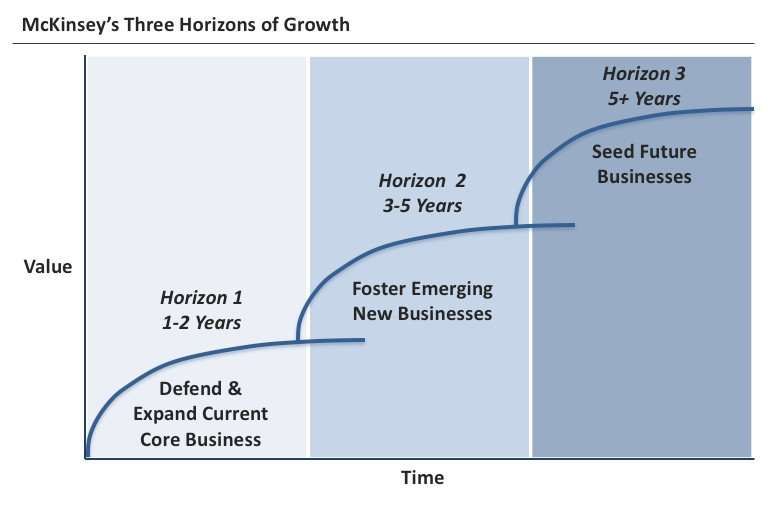The latest research, insights, tools, and resources that make managing a digital shop easier,
The Most Common Agency Revgen Issue
TL;DR
The latest episode of Agency Chats is live! This newsletter adds context to our latest Agency Chats episode we did with Productive about how revgen strategies and systems impact agency valuations.
The Most Common Revgen IssueYou need a single source of strategic truth. Since launching the Revgen Review Service in January, I’ve had the privilege of helping a bunch of agency leaders diagnose and improve their revgen strategies. From small 10-person shops that simply needed a bit of guidance to 400 FTE agencies that were already dominating certain areas but needed a clear roadmap for future growth. It’s been fascinating to dive deep into how they think about growth, the structure they’ve created to enable it, and the tactics they implement that actually work. While each of them had some revgen components dialed in, I haven’t seen a single one that’s had a detailed single source of strategic truth. Their revgen strategies exist across a bunch of scattered Google docs, within individual employee’s minds, or not at all. This increased entropy adds friction to the system and increases the ability of shiny objects to sap focus. Left unchecked, this lack of alignment results in slower, less profitable growth. Fixing this tends to unlock that “next step” in growth for agencies who’ve been stuck at a certain level for a while. I guess I just gave away my big value-add… DIY this whole thing and get yourself something nice with the $4,700 you would have given me. Here’s how: Revgen Strategy StructureI won’t spend a ton of time on this, but it’s helpful to understand what all goes into a revgen strategy and how it’s structured. At the very base is the vision for the agency. You gotta know wtf you’re building. This might be the second most common issue I see. I have an old newsletter discussing doing this correctly vs. the standard way that doesn’t work. Once you have the vision down, you can build out your goals, positioning, pricing methods & levels, channels, tactics, and implementation plan. This is the part that’s scattered across a million Google docs, if they’re consciously addressed at all. That happens because the work is divided among various departments and individuals across the agency. Then, when someone goes, “Hey, we should do cold outreach,” there isn’t an easy way to evaluate that idea. The single source of truth is missing, so it becomes a debate, and debates aren’t necessarily won by who’s right. Components of Your Single Source of Strategic TruthFunctionally, I love Google docs for storing your SSoST. It makes it simple to have a summary doc, and link out to detail docs as needed. As long as this summary doc is updated whenever the sub-docs are, leadership and management should be able to check new ideas against it easily. I recommend keeping the doc itself as simple as possible. Get the high-level core ideas across for each section and link out for more detailed explanations of each. Here’s what I include in them:
Devoting Time to Strategy WorkThat’s a lot to think through. Leaders need to balance the strategy development with actually growing the agency. Here’s a rough idea of the percent of time your leadership team should spend on strategy work vs. your agency’s size (FTE = Full-time Employees). Keep in mind that these are general guidelines, not rigid rules.
This tracks with the agency owner's billable vs. non-billable hours data from our Salary Report. I’d argue that those billable hours are still too high, though. Feel Free to Reach OutHopefully, this helps you put some structure around how you think about revgen at your agency. There’s a ton of nuance here, but just about any shop can benefit from writing down their revgen strategy. As always, if you have any questions or want help growing your agency, simply reply to this email, and we can set up a time to chat. Until next time! -Nick |
Research & Strategy for Digital Agencies
Nicholas Petroski
The latest research, insights, tools, and resources that make managing a digital shop easier,
TL;DR The shape of your agency’s revenue can have a massive impact on your valuation and your ability to grow sustainably. The balance between projects and retainers is the main component of your revenue profile. Fast-growing agencies completed about 25% more projects than the slow-growing ones while having about 20% fewer retainer clients. Recent market dynamics are forcing a shift away from retainers and toward projects. Client concentration is another major revenue profile component. For...
TL;DR The value of a digital agency is directly related to the quality of its leadership and management. There are three core areas that you need experienced managers to lead: Revgen, Value delivery, and Ops. You can build your management team through acquihires, hiring from bigger agencies (but not too big), and hiring from industry. Don’t be afraid to remove those who don’t fit. As you fill out your management team, level up your agency’s sophistication by setting a solid strategic...
TL;DR NEW SURVEY: The 2024 Digital Services Growth Survey is live! Participate and get access to the full results. I’m partnering with Productive on a new miniseries on building valuable agencies. Building a valuable agency (for sale) is incredibly similar to simply building a great agency. The main components of a valuable agency can be sorted into: capable leadership and management, revgen strategy and systems, revenue profile, efficiency and margins, and finally, innovation / future agency...
